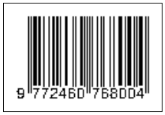Inspeksi Kualitas Pengelasan Besi Menggunakan Teknik Segmentasi Citra Berbasis Convolutional Neural Network
Wahyono Wahyono(1), Andi Dharmawan(2), Lukman Awaludin(3*), Oskar Nathan(4), Baskara Baskara(5)
(1) Departmen of Computer Science and Electronics, Universitas Gadjah Mada, Yogyakarta
(2) Departmen of Computer Science and Electronics, Universitas Gadjah Mada, Yogyakarta
(3) Departmen of Computer Science and Electronics, Universitas Gadjah Mada, Yogyakarta
(4) Departmen of Computer Science and Electronics, Universitas Gadjah Mada, Yogyakarta Department of Computer Science and Engineering, Toyohashi University of Technology Toyohashi, Aichi 441-8580, Japan
(5) Department of Computer Science and Engineering, Toyohashi University of Technology Toyohashi, Aichi 441-8580, Japan
(*) Corresponding Author
Abstract
Inspeksi pengelasan merupakan kebutuhan mutlak bagi dunia industri terutama yang bergerak dibidang otomotif untuk memastikan kualitas las. Namun demikian, sebagian besar industri masih menggunakan pemeriksaan manual yang bersifat subjektif dan penuh dengan bias yang dapat berakibat pada inkonsistensi dalam penilaian standar kualitas. Oleh karena itu, diperlukan suatu sistem cerdas yang dapat memeriksa kualitas pengelasan dengan konsisten. Penelitian ini bertujuan untuk membuat model kecerdasan buatan berbasis deep learning dan computer vision untuk mendeteksi area-area pengelasan dan mengklasifikasikannya kedalam kategori baik dan buruk. Model CNN dengan arsitektur UNet diadopsi untuk melakukan segmentasi citra pada gambar pengelasan besi. Studi penggunaan beberapa teknik ekstraksi fitur juga dilakukan untuk mendapatkan performa model terbaik berdasarkan skor IoU dan kecepatan konvergensi model. Berdasarkan hasil eksperimen, teknik CNN UNet terbukti mampu meningkatkan performa model dengan skor IoU sebesar 78,1% dan dengan kecepatan konvergensi dalam 144 epoch.
--
Welding inspection is an absolute necessity for the industrial world, especially those engaged in the automotive sector to ensure weld quality. However, most industries still use manual inspection which is subjective and full of bias which can result in inconsistencies in the assessment of quality standards. Therefore, intelligent system that can check the quality of welding consistently is needed. This study aims to create an artificial intelligence model based on deep learning and computer vision to detect welding spots and classify them into good and bad categories. CNN model with UNet architecture is adopted to perform image segmentation on iron welding images. Studies using several feature extraction techniques are also conducted to obtain the best model performance based on IoU scores and model convergence speed. Based on the experimental results, the UNet technique is proven to be able to improve the performance of the model with an IoU score of 78.1% and with a convergence speed of 144 epochs.
Keywords
Full Text:
PDFReferences
O. Ronneberger, P. Fischer, dan T. Brox. “U-Net: Convolutional Networks for Biomedical Image Segmentation”. en. In: Medical Image Computing and Computer-Assisted Interven- tion – MICCAI 2015. Ed. by N. Navab, J. Hornegger, W. M. Wells, dan A. F. Frangi. Lecture Notes in Computer Science. Cham: Springer International Publishing, 2015, pp. 234–241. ISBN: 9783319245744. DOI: 10.1007/978-3-319-24574-4_28. [2] N. Oskar, D. U. K. Putri, dan A. Dharmawan. “Deep Learning-based Weld Spot Segmenta- tion using Modified UNet with Various Convolutional Blocks”. In: ICIC Express Letter B: Applications 12.12 (2021). [3] I. Sobel. “An Isotropic 3x3 Image Gradient Operator”. In: Presentation at Stanford A.I. Project 1968 (Feb. 2014). [4] T. Ojala, M. Pietikainen, dan T. Maenpaa. “Multiresolution gray-scale and rotation invariant texture classification with local binary patterns”. In: IEEE Transactions on Pattern Analysis and Machine Intelligence 24.7 (July 2002), pp. 971–987. ISSN: 1939-3539. DOI: 10.1109/ TPAMI.2002.1017623. [5] K. Simonyan dan A. Zisserman. “Very Deep Convolutional Networks for Large-Scale Image Recognition”. In: 3rd International Conference on Learning Representations, ICLR 2015, San Diego, CA, USA, May 7-9, 2015, Conference Track Proceedings. Ed. by Y. Bengio dan Y. LeCun. 2015. [6] S. Ioffe dan C. Szegedy. “Batch normalization: accelerating deep network training by re- ducing internal covariate shift”. In: Proceedings of the 32nd International Conference on International Conference on Machine Learning - Volume 37. ICML’15. Lille, France: JM- LR.org, July 2015, pp. 448–456. (Visited on 09/16/2021). [7] V. Nair dan G. E. Hinton. “Rectified linear units improve restricted boltzmann machines”. In: Proceedings of the 27th International Conference on International Conference on Machine Learning. ICML’10. Haifa, Israel: Omnipress, June 2010, pp. 807–814. ISBN: 9781605589077. (Visited on 09/16/2021). [8] S. Mannor, D. Peleg, dan R. Rubinstein. “The cross entropy method for classification”. In: Proceedings of the 22nd international conference on Machine learning. ICML ’05. Bonn, Germany: Association for Computing Machinery, Aug. 2005, pp. 561–568. ISBN: 9781595931801. DOI: 10.1145/1102351.1102422. URL: https://doi.org/ 10.1145/1102351.1102422 (visited on 09/16/2021). [9] C. H. Sudre, W. Li, T. Vercauteren, S. Ourselin, dan M. Jorge Cardoso. “Generalised Dice Overlap as a Deep Learning Loss Function for Highly Unbalanced Segmentations”. en. In: Deep Learning in Medical Image Analysis and Multimodal Learning for Clinical Decision Support. Ed. by M. J. Cardoso, T. Arbel, G. Carneiro, T. Syeda-Mahmood, J. M. R. Tavares, M. Moradi, A. Bradley, H. Greenspan, J. P. Papa, A. Madabhushi, J. C. Nascimento, J. S. Cardoso, V. Belagiannis, dan Z. Lu. Lecture Notes in Computer Science. Cham: Springer International Publishing, 2017, pp. 240–248. ISBN: 9783319675589. DOI: 10.1007/978- 3-319-67558-9_28. [10] A. Krogh dan J. A. Hertz. “A simple weight decay can improve generalization”. In: Pro- ceedings of the 4th International Conference on Neural Information Processing Systems. NIPS’91. Denver, Colorado: Morgan Kaufmann Publishers Inc., Dec. 1991, pp. 950–957. ISBN: 9781558602229. (Visited on 09/16/2021). [11] I. Sutskever, J. Martens, G. Dahl, dan G. Hinton. “On the importance of initialization and momentum in deep learning”. In: Proceedings of the 30th International Conference on In- ternational Conference on Machine Learning - Volume 28. ICML’13. Atlanta, GA, USA: JMLR.org, June 2013, pp. III–1139–III–1147. (Visited on 09/16/2021).
Article Metrics
Refbacks
- There are currently no refbacks.
Copyright (c) 2024 IJEIS (Indonesian Journal of Electronics and Instrumentation Systems)

This work is licensed under a Creative Commons Attribution-ShareAlike 4.0 International License.
View My Stats1







